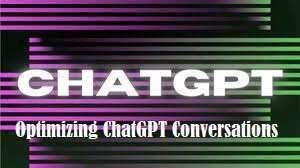
Visits: 2
Best Practices for Optimizing ChatGPT Conversations
Optimizing ChatGPT conversations is essential to ensure smooth interactions and accurate responses. As an AI-powered conversational agent, ChatGPT can be fine-tuned and customized to meet specific requirements. Whether you are using it for customer support, content creation, or other applications, implementing best practices can enhance the overall user experience and effectiveness of the interactions. In this article, we will explore some of the best practices for optimizing ChatGPT conversations.
1. Provide Clear and Contextual Prompts
Clear and contextually relevant prompts set the tone for the conversation. State the objective or query concisely to guide ChatGPT in generating accurate responses. Including important context helps the model understand the user’s intent and provide more relevant answers.
2. Use System-Level and User-Specific Instructions
To refine ChatGPT’s responses, use system-level and user-specific instructions. You can set a system instruction to ensure a specific behavior across all conversations. Additionally, you can use user-specific instructions to tailor responses based on the user’s requirements, making the conversation more personalized and effective.
3. Control Response Length
ChatGPT’s responses can vary in length, depending on the input and the model’s understanding. To maintain concise and focused replies, you can control the response length using the max_tokens parameter in the API request. Experiment with different values to find the optimal response length for your use case.
4. Add a Moderation Layer
To ensure responsible usage and prevent inappropriate or biased content, consider adding a moderation layer to filter and review ChatGPT’s responses before they are presented to users. OpenAI provides guidelines on content moderation to assist in implementing this layer effectively.
5. Use User Prompts to Guide the Conversation
In multi-turn conversations, use user prompts to guide the flow of the conversation. By referring back to previous responses or maintaining a conversational context, you can achieve a more coherent and meaningful exchange with ChatGPT.
6. Iterate and Refine Prompts
Optimizing ChatGPT conversations is an iterative process. Continuously refine and experiment with prompts to improve the model’s accuracy and generate more useful responses. Solicit user feedback to understand common issues and iteratively address them.
7. Balance Flexibility and Control
Striking the right balance between giving ChatGPT the freedom to generate creative responses and maintaining control over the output is crucial. Use instructions to guide the level of formality, style, or specificity required in responses, depending on the use case.
8. Stay Updated with OpenAI Guidelines
OpenAI periodically updates its guidelines and recommendations for using ChatGPT responsibly. Stay informed about the latest guidelines to ensure ethical and safe usage of the AI model.
Conclusion
Optimizing ChatGPT conversations is a dynamic process that involves crafting clear prompts, fine-tuning responses, and striking a balance between flexibility and control. By following these best practices, businesses and developers can create more engaging and effective interactions with ChatGPT, delivering better customer support, content creation, and other AI-powered experiences.
Frequently asked questions (FAQs) about optimizing ChatGPT conversations:
FAQ 1: How can I optimize ChatGPT conversations for better user experience?
Optimizing ChatGPT conversations for a better user experience involves providing clear and contextual prompts, using user-specific instructions, and controlling response length. These practices help ensure accurate and concise responses that align with the user’s intent.
FAQ 2: What are system-level instructions, and how do they affect the conversation?
System-level instructions set the behavior of ChatGPT across all conversations. They help maintain consistency in responses and enable you to define the tone and style you want ChatGPT to follow.
FAQ 3: Can I use ChatGPT for multi-turn conversations?
Yes, ChatGPT supports multi-turn conversations. You can use user prompts to guide the flow of the conversation and maintain context throughout the exchange. This allows for more dynamic and interactive interactions with the AI.
FAQ 4: How can I ensure responsible usage of ChatGPT in my applications?
To ensure responsible usage, consider adding a moderation layer to filter and review ChatGPT’s responses before presenting them to users. It helps prevent the generation of inappropriate or biased content and ensures a safe user experience.
FAQ 5: Should I continuously iterate and refine prompts?
Yes, iterating and refining prompts is a crucial part of optimizing ChatGPT conversations. By continuously experimenting with different prompts and soliciting user feedback, you can improve the model’s accuracy and effectiveness over time.
FAQ 6: Where can I find the latest guidelines for using ChatGPT responsibly?
OpenAI provides periodic updates to its guidelines for responsible AI usage. Stay informed by visiting OpenAI’s official website or developer resources to access the latest guidelines and recommendations.


%20(1).png)


